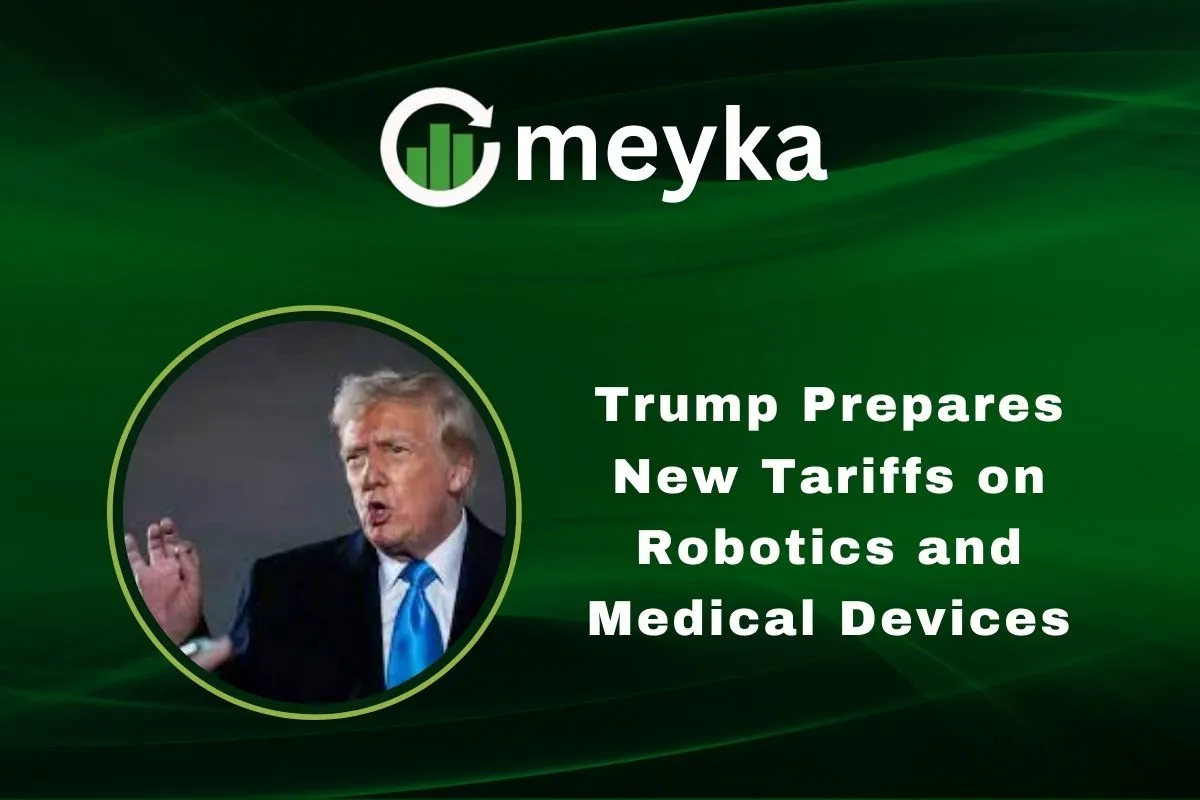Trump Prepares New Tariffs on Robotics and Medical Devices
We are witnessing a bold move in U.S. trade policy. In early September 2025, the Commerce Department quietly launched new national-security investigations into imports of robotics, industrial machinery, and medical devices. If these probes show that domestic industries are under threat, the government may impose new tariffs. These industries, robotics and medical technology, touch on human health, innovation, and national defense. The stakes are high. In this article, we explore why these sectors are now in the crosshairs, what the effects might be, and how the U.S. and global players could respond.
Trump’s Tariff Strategy: A Quick Look Back
Tariffs have long been a tool Trump favors. In his second term, he has already slapped heavy duties on steel, aluminum, autos, copper, and other goods. These moves often rest on arguments of protecting U.S. jobs and reducing reliance on foreign suppliers.
Now, with robotics and medical devices added to the list, we see an expansion of his “industrial protection” agenda. The shift also hints at deeper strategic aims: controlling supply chains that are vital in tech, defense, and healthcare.
Why Focus on Robotics & Medical Devices?
Why pick these sectors now?
- High value and tech intensity: Robotics and medical gear are among the most advanced products in trade. They often include precision parts, software, and sensors.
- Strategic importance: Medical devices involve patient care and public health. Robotics underpins automation and defense systems.
- Import dependence: The U.S. still relies on imports for many components and devices, especially from China, Europe, and East Asia.
- “National security” framing: By using Section 232 (a law about national security), the government frames these imports as potential risks.
In short: the technology is advanced, the dependence is real, and the stakes are high.
Economic Effects on the U.S.
If tariffs are imposed, we can expect both costs and opportunities.
Short-term pressures
- Manufacturers may face higher costs if they rely on imported parts or devices.
- Hospitals and clinics could absorb new expenses for medical devices like MRI machines, stents, or robotic surgical tools.
- Some sectors could slow down or delay projects because of uncertainty.
Long-term goals
- The government may nudge U.S. firms to build capacity domestically.
- Suppliers might invest more in the U.S. to avoid tariffs.
- Over time, the domestic robotics and medical industries could become more competitive if they can scale efficiently.
However, there is a risk: overprotection can stifle innovation or raise prices too much for consumers and health systems.
Global Trade & Supply Chain Dynamics
Tariffs don’t operate in a vacuum; they ripple across trade.
- Key exporters (China, EU, Japan, South Korea) might retaliate with their own tariffs or trade barriers.
- Global supply chains will feel strain. Robotics and medical devices often use parts from dozens of countries.
- Allies might lobby for exemptions or file complaints at the World Trade Organization (WTO).
Also, countries might start “reshoring” critical production or forming new regional alliances to reduce risk.
Healthcare Impacts
Among the parts of this policy that hit home, medical devices carry heavy risks.
- Tariffs could drive up the cost of hospital equipment, from pacemakers to MRI scanners.
- Hospitals may delay buying new tech or replace aging devices less often.
- Patients might see higher bills or limited access to advanced treatments, especially in less wealthy areas.
- Some argue that medical devices were once shielded from tariffs for ethical reasons; now that exception may be eroding.
In effect, the policy might clash with public health goals.
Robotics Industry Viewpoint
What do robotics firms think?
- Some U.S. companies see opportunity: more demand for domestically made robots and automation.
- Others worry about the cost and complexity of retooling factories to source parts locally.
- Smaller firms may struggle with capital and supply chain changes.
- For robotics in manufacturing, tariffs could slow adoption of automation in U.S. plants, paradoxically undermining competitiveness.
We likely will see a mix of winners and losers.
Political & Strategic Angle
This tariff push fits into Trump’s “America First” brand. He has long argued that the U.S. should reduce reliance on foreign manufacturing and protect key industries.
With elections on the horizon, the messaging matters: tariffs can please certain constituencies (e.g., manufacturing states). But backlash may come from healthcare stakeholders, tech firms, and trade partners.
Also, this move sits at the heart of U.S.-China and U.S.-Europe battles over advanced technologies. Whoever leads in robotics and medical tech gains leverage over global standards, supply chains, and geopolitical influence.
What’s Next: Scenarios & Key Questions
As these investigations roll out, here’s what to watch:
- Public comments and exemptions: The government invites feedback. Some industries might win carve-outs.
- Which goods are hit first? The broad probe includes everything from masks and syringes to robotic arms and industrial ovens.
- Tariff rates & phases: The levies may be phased in or capped.
- WTO or legal challenges: Countries or firms may challenge the policy.
- Trade diplomacy: Will the U.S. negotiate side deals or trade pacts to ease tension?
If the tariffs go ahead, the outcome could reshape healthcare, manufacturing, and global tech alliances.
Conclusion
Tariffs on robotics and medical devices are not just financial. They touch health, innovation, national security, and global relations. We may see higher costs for hospitals and firms. But the U.S. also has a chance to rebuild critical industries at home. As the investigation proceeds, the balance will matter: how much protection, how much openness, how many exemptions. For patients, business owners, and workers alike, these trade policies will carry real weight.
We’ll continue tracking updates, responses from industry and governments, and the ripple effects. Tariffs are more than numbers; they’re about power, health, and our future.
FAQS:
Tariffs can raise prices on imported goods, limit choices for buyers, and spark trade wars. They may also hurt small businesses that rely on affordable foreign supplies.
Yes, tariffs can add costs to goods and services. When businesses pay more for imports, they pass costs to customers. This can push overall inflation higher in the economy.
Tariffs on medical devices may raise hospital costs, limit access to advanced tools, and increase patient bills. Smaller clinics could struggle to afford vital equipment for quality care.
Disclaimer:
This content is for informational purposes only and is not financial advice. Always conduct your research.






